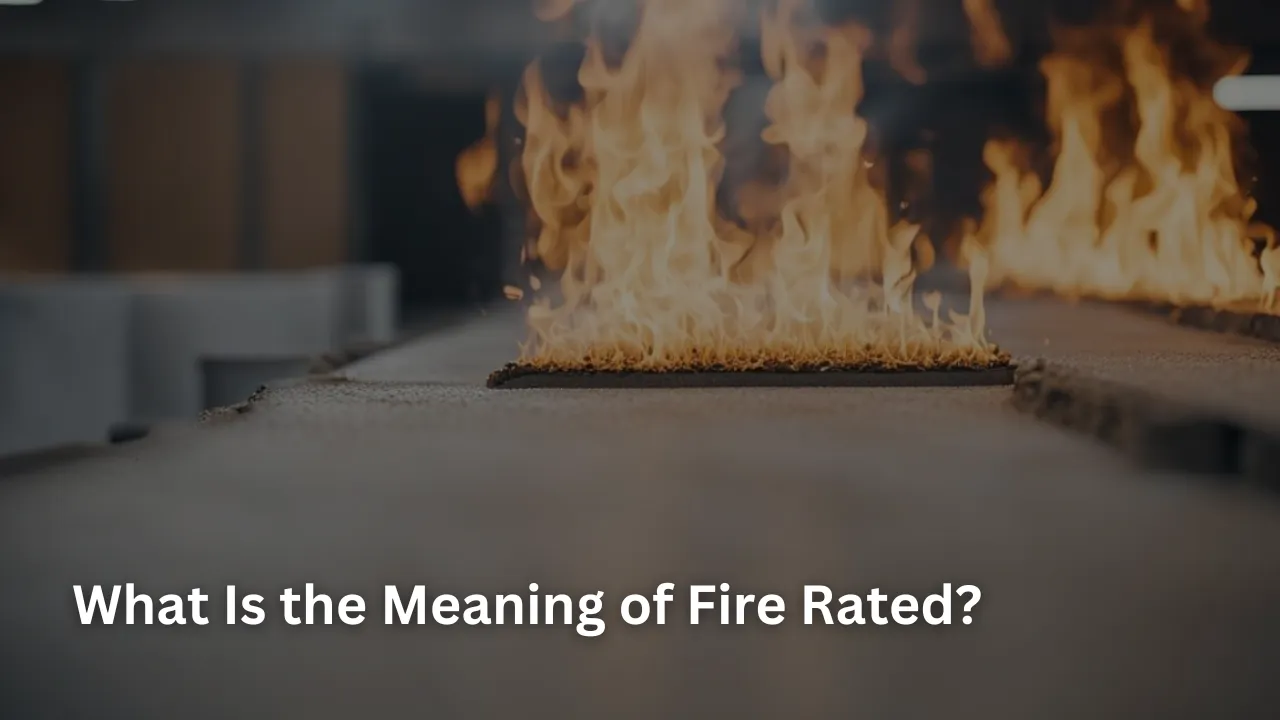Sitting at home and thinking about a movie to watch? What’s the first thing you will consider while opting for a movie? The ratings!!! right? We trust ratings, and they are helpful in making our movie choices, just like that there are Fire Ratings.
There are structures and materials, such as fire rated access panels, that can withstand fire longer than others. Fire ratings refer to the classification given to different materials, assemblies or structures that is based on their ability to resist fire and prevent it from spreading for a certain period of time.
Why are fire ratings important and the standards?
These fire ratings are helpful in ensuring safety by specifically classifying how long a material can withstand fire under certain conditions, these ratings are necessary for designing and constructing buildings in order to comply with building regulations, mostly in areas like exit routes, floors, doors and fire barriers.
Fire ratings are classified on the basis of standard codes that are developed by regulatory bodies. In the US, National Fire Protection Association (NFPA) along with and the International Building Code (IBC), is responsible for regulating fire rating standards.
The standards provide detailed requirements for assemblies, fire-resistance ratings, temperature ratings, smoke ratings etc.
Some common terms and aspects related to fire ratings include:
Fire-Resistance Rating: this indicates the time (in minutes or hours) that a building component can resist exposure to fire without collapsing. Common ratings are 30 minutes, 1 hour, 2 hours, etc.
Testing Standards: Organizations like ASTM (American Society for Testing and Materials) and National Fire Protection Association (NFPA) set standardized tests to determine fire ratings. For example, ASTM E119 is a standard for fire resistance of building materials.
Fire-Resistance Assembly: Assemblies like fire-rated doors or walls have specific fire ratings that prevent the spread of fire from one area to another.
Smoke Development: This is measured for the amount of smoke a burning material generates, causing invisibility and danger during a fire.
Flame Spread: This is a measure for how quickly fire spreads across a material’s surface, indicating potential fire spread within a building.
Fire rating tests and classifications:
The tests done for the fire ratings are highly evolved and are done by directly exposing the product to the flame, that’s why it’s called single burn test or SBI.
The tests done for assigning the ratings stimulates the flame exposure and checks on different parameters like fire spread and soke growth rate.
The tests are also designed to measure oxygen consumption and production of carbon dioxide and carbon monoxide. This gas concentration will help estimate the heat release and burning properties of the tested materials.
Classification:
The National Fire Protection Association (NFPA) sets standards for fire ratings that help ensure the safety of building materials, structures, and fire-protection equipment. Here we are providing you with some examples of fire ratings as per NFPA standards:
1. NFPA 101: Life Safety Code
- Fire Resistance for Walls and Barriers:
- 1-hour fire-rated walls are commonly required for corridors in healthcare facilities to prevent fire and smoke spread.
- 2-hour fire-rated barriers are often required between buildings that are different occupancy types (e.g., between a theater and an office area) to prevent fire spread.
- Doors: Doors in fire-resistance-rated walls must also be fire-rated (e.g., 1-hour fire door in a 1-hour wall).
2. NFPA 80: Standard for Fire Doors and Other Opening Protectives
- Fire Doors:
- Specifies fire-protection ratings for doors based on their location and function:
- 20-minute fire doors: Often used in corridors or as barriers in lower-risk areas.
- 45-minute fire doors: Typically used in walls around corridors and hazardous areas.
- 90-minute fire doors: Common for stairwells and exit enclosures.
- 3-hour fire doors: Used for severe fire exposure, often in walls with high fire-resistance requirements.
- Specifies fire-protection ratings for doors based on their location and function:
3. NFPA 221: Standard for High Challenge Fire Walls, Fire Walls, and Fire Barrier Walls
- Fire Walls and Fire Barrier Walls:
- Requires fire walls to have a minimum of a 2-hour rating to 4-hour rating to contain high-challenge fires.
- Separates different sections of buildings, especially when combustible materials or hazardous processes are involved.
4. NFPA 13: Standard for the Installation of Sprinkler Systems
- Sprinkler Protection for Fire Ratings:
- This standard doesn’t specify fire ratings for walls directly but explains how sprinklers can reduce fire rating requirements. For example:
- Areas protected by an automatic sprinkler system may have a reduced fire resistance rating requirement for certain assemblies.
- This standard doesn’t specify fire ratings for walls directly but explains how sprinklers can reduce fire rating requirements. For example:
5. NFPA 5000: Building Construction and Safety Code
- Construction Type Requirements:
- Defines building types based on fire resistance:
- Type I construction: Requires structural components like floors and roofs to have fire ratings of 3-4 hours in high-risk settings.
- Type II construction: Typically requires 1-2 hours of fire resistance for primary structural components.
- Type V construction: No fire resistance required for structural elements, but fire-rated materials may still be used for specific sections like stairwells or exit corridors.
- Defines building types based on fire resistance:
6. NFPA 252: Standard Methods of Fire Tests of Door Assemblies
- Tests and classifies door assemblies for fire exposure based on duration:
- 20-minute, 30-minute, 45-minute, 60-minute, and 90-minute fire-protection ratings for doors.
- These ratings are critical for doors in fire barriers to prevent fire spread through openings.
7. NFPA 705: Recommended Practice for a Field Flame Test for Textiles and Films
- Flame Resistance of Fabrics:
- Provides guidance on testing flame resistance in textiles used for curtains and similar materials to avoid rapid flame spread.
These NFPA standards provide clear guidelines for fire ratings across various materials and structures, ensuring they perform adequately under fire conditions to enhance building safety.
We have tried to explain the topic with the examples from the national regulatory bodies and all the information is provided from reliable sources in our possible efforts.
Thank you for being our faithful readers.
Also Read:

